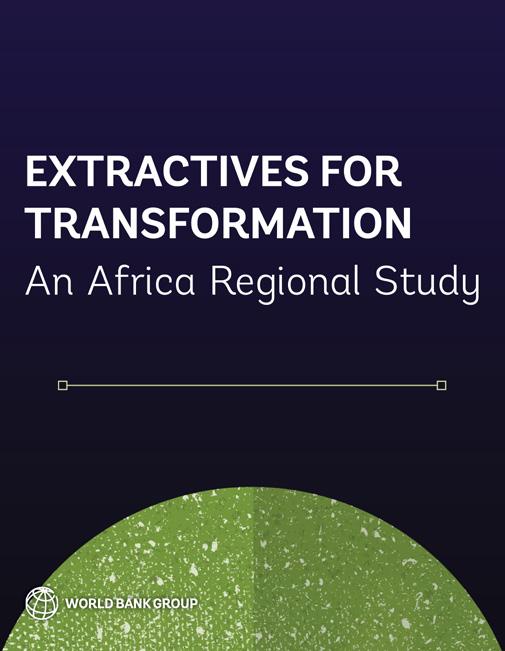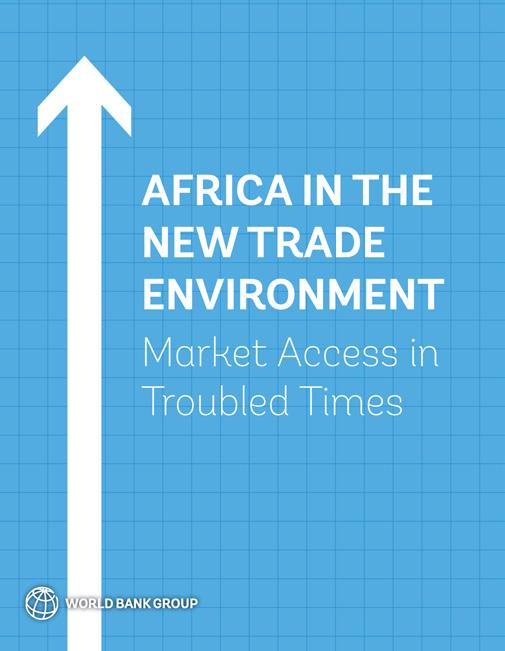
6 minute read
Africa
INDUSTRIALIZATION IN SUB-SAHARAN AFRICA
Seizing Opportunities in Global Value Chains
Advertisement
By Kaleb G. Abreha, Woubet Kassa, Emmanuel K. K. Lartey, Taye A. Mengistae, Solomon Owusu, and Albert G. Zeufack
AFRICA DEVELOPMENT FORUM
September 2021. 212 pages. Stock no. C211673 (ISBN: 978-1-4648-1673-4). US$43.00
Industrialization drove the sustained growth in jobs and productivity that marked the developmental take-off of most developed economies. Yet, with emerging global trends in technology and international trade, many have argued that the prospects of manufacturing in Sub-Saharan Africa may be limited. There are strong claims that economies in the region have experienced “premature deindustrialization” which may have reduced the viability of policies and strategies to promote manufacturing as a driver of sustainable growth. This report comprehensively reassesses the prospects for industrialization playing a critical role in Sub-Saharan African countries'development. It shows that manufacturing represents a viable path to structural transformation through integration into global value chains (GVCs). Although countries are relatively well-integrated into GVCs, there is a need to strengthen linkages by increasing value-added to current exports and strategizing to upgrade into high value-added industries. Due to rising wages, productivity growth will be critical to promoting competitiveness for sustained job creation in manufacturing and structural transformation.
THE FUTURE OF WORK IN AFRICA (FRENCH EDITION)
Edited by Jieun Choi, Mark A. Dutz, and Zainab Usman
AFRICA DEVELOPMENT FORUM
The Future of Work in Africa
Harnessing the Potential of Digital Technologies for All
Edited by Jieun Choi, Mark A. Dutz, and Zainab Usman
A Companion to the World Development Report 2019 on the Changing Nature of Work The Future of Work in Africa focuses on the key themes of creating productive jobs and addressing the needs of those left behind. It highlights how global trends, especially the adoption of digital technologies, may change the nature of work in Sub-Saharan Africa by creating new opportunities and challenges. It argues that, contrary to global fears of worker displacement by new technologies, African countries can develop an inclusive future of work, one with opportunities for lower-skilled workers. Harnessing these opportunities is, however, contingent on implementing policies and making productive investments in four main areas. These are enabling inclusive digital technologies; building human capital for a young, rapidly growing, and largely low-skilled labor force; increasing the productivity of informal workers and enterprises; and extending social protection coverage to mitigate the risks associated with disruptions to labor markets. This companion report to the World Bank's World Development Report 2019 concludes with important policy questions to guide future research that could lead to more inclusive growth for African nations.
EXTRACTIVES FOR TRANSFORMATION
An Africa Regional Study
By James Frederick Cust and Boubacar Bocoum
Harnessing natural resource wealth to drive economic transformation is central to Africa's economic future. However, the historical record suggests that the process will not be easy. The present situation is one of both challenges—including rising debt distress and unmet expectations—and opportunities, with new discoveries and large reserves waiting to be exploited. Looking ahead, there are new risks and prospects on the horizon. For instance, the transition away from carbon fuels will affect the demand for fossil fuels and increase the need for minerals and metals useful in the low carbon economy. How can Sub-Saharan African countries prepare for this future while drawing on the lessons of the past? Leveraging resources for economic transformation will require new approaches but will confront longstanding political economy pitfalls.

November 2021. 200 pages. Stock no. C211743 (ISBN: 978-1-4648-1743-4). US$48.50
SOCIAL CONTRACT FOR STABILITY, EQUITY, AND PROSPERITY IN AFRICA
By the World Bank
While many African countries are catching up to the higher-income countries, some are falling behind despite their best efforts and those of the development community. Since their independence, multiple Sub-Saharan African (SSA) countries have faced state-building and governance challenges, sometimes in the context of widespread political turbulence, civil conflict, military rule, and state failure. This situation has resulted in unevenness of national state capacities (asymmetrical state capabilities that vary across sectors, scale of government, and over time), weakened political settlements, and ineffective civil society. The COVID-19 pandemic could exacerbate these challenges and lead to the emergence of new ones due to the socioeconomic effects of containment measures.
This report lays the foundations for the World Bank to fully integrate a social contract lens in its development policy toolkit in SSA. This report's contribution consists mostly of a conceptual and empirical framework that maps knowledge gaps, and presents examples for the application of a social contract lens in the region.

October 2021. 90 pages. Stock no. C211662 (ISBN: 978-1-4648-1662-8). US$43.00
AFRICA IN THE NEW TRADE ENVIRONMENT
Market Access in Troubled Times
Edited by Albert G. Zeufack, Woubet Kassa, and Souleymane Coulibaly

October 2021. 340 pages. Stock no. C211756 (ISBN: 978-1-4648-1756-4). US$53.95
Africa represents a small share of global production and trade, but it is home to half of the extreme poor worldwide. To catch up with the rest of the world, there is no alternative: the continent needs to link its production and trade to the global economy to take advantage of unlimited demand and innovation along the supply chain.
The book presents a strategy to bolster Africa's market access in the current global environment. It explores three key areas—the impact of trade agreements (unilateral, regional, and multilateral) with traditional partners (the European Union and the United States) and a way forward; the role of new market frontiers in Asia both from the perspective of restructuring economies in the region as well as changing global value chains (GVCs) and their implications for Africa; and an inward examination of the promise and challenges of regional trade and value chains. The book meticulously explores ways to maximize Africa's access to the two leading world markets—the European Union and the United States—while at the same time diversifying market access to the emerging Asian market. It calls for the continent to anchor its market access strategy to deeper regional integration in troubled times.
THE QUALITY OF HEALTH AND EDUCATION SYSTEMS ACROSS AFRICA
Insights from a Decade of Service Delivery Indicators Surveys
By Roberta Gatti, Kathryn Andrews, Ciro Avitabile, Ruben Conner, Jigyasa Sharma, and Andres Yi Chang

October 2021. 160 pages. Stock no. C211675 (ISBN: 978-1-4648-1675-8). US$43.00
The World Bank's Service Delivery Indicators (SDI) surveys measure the quality of services where the service meets the citizens: in schools and health facilities. Have teachers mastered the subject matter they are teaching, and can doctors accurately diagnose and treat key health conditions? Are schools and health facilities stocked with the needed equipment, supplies, and infrastructure to optimize learning and clinical care outcomes? Are schools and health facilities equipped to provide services during a pandemic? For the past 10 years, the World Bank's SDI surveys have collected nationally representative data across Sub-Saharan Africa to help identify areas of resilience and constraint in service delivery and have shed light on how service delivery may foster or stunt human capital accumulation. The evidence from SDI surveys offers important insights for how countries can build back better in the wake of the massive disruptions brought about by the COVID-19 pandemic.





